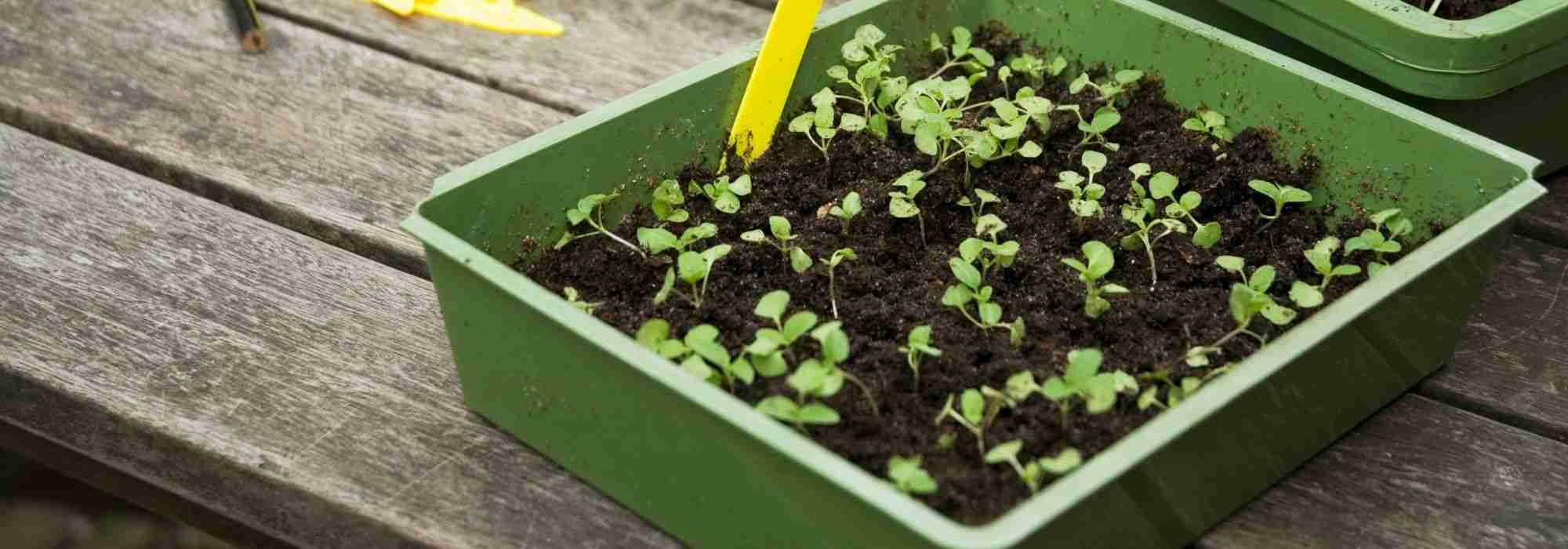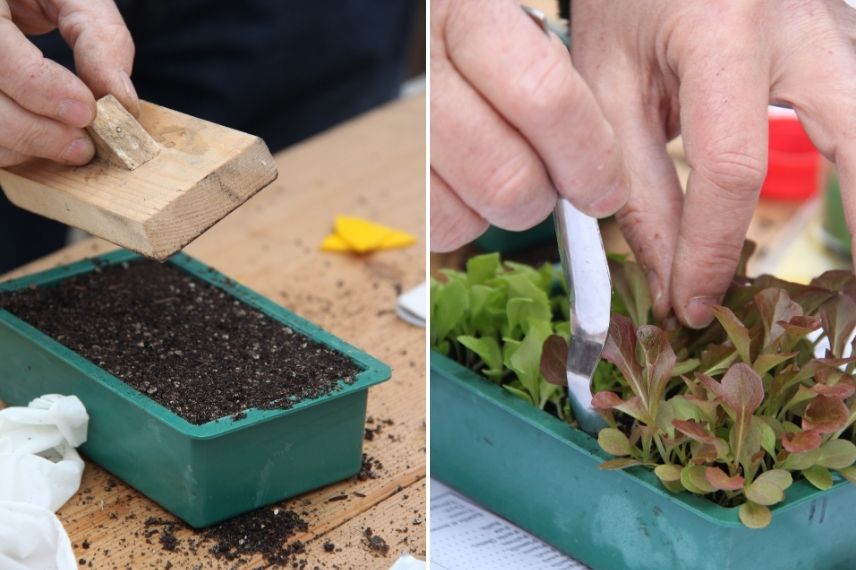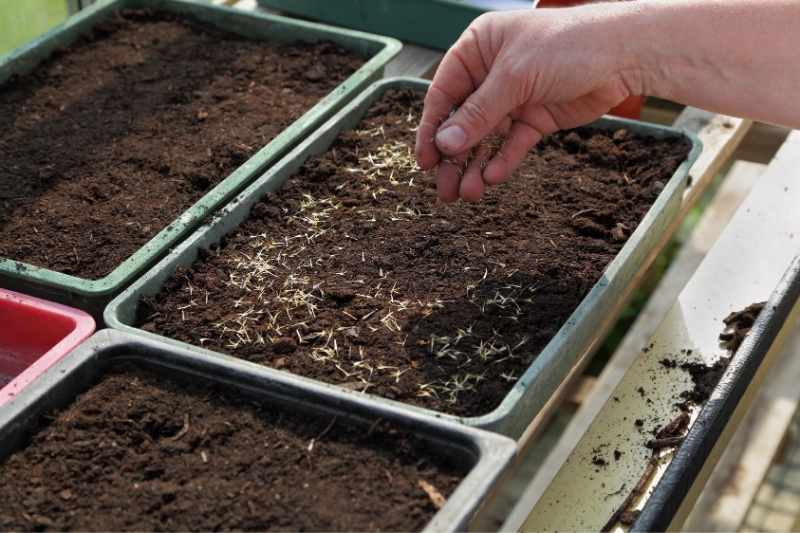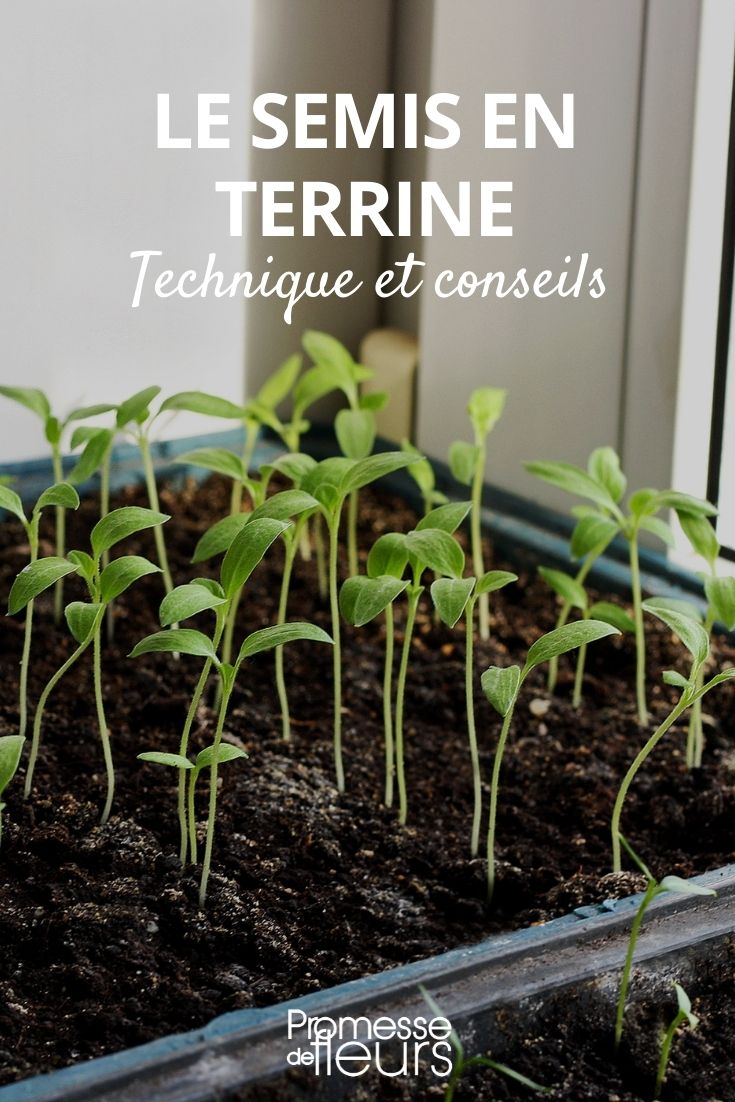
Sowing in seed trays
Our tips for successful sowing
Contents
Sowing in seed trays is practical and widely used by gardeners! Allowing both earlier sowing dates and the production of a large number of seedlings in a small space, this type of sowing should be part of every gardener’s skillset if they want to obtain more young plants at lower cost. Discover sowing in seed trays or modules and the tools to become a true sowing expert!
What is sowing in seed trays?
Sowing in a seed tray involves germinating seeds of vegetable or ornamental plants in a container (often square or rectangular). The tray can be fitted with a transparent lid recreating the atmosphere of a mini-greenhouse. This technique is particularly suited to very small seeds that are difficult to sow precisely in a bucket or directly in the vegetable garden. It is commonly used for sowing that needs plenty of heat to germinate.
Finally, it applies only to plants that tolerate stress of a bare-root transplant.

Sowing in a seed tray
When to sow in a seed tray?
Use of seed trays is mainly in spring but can also be useful in autumn for winter vegetable crops.
Generally, mid-January marks the start of sowing in seed trays and runs until April in the vast majority of cases. After that month, temperatures are high enough to sow under a polytunnel or a cold frame, for example. Indeed, these miniature greenhouses can overheat if exposed too directly to the sun. That is why they are no longer used once spring is well underway.
⇒ Discover our tutorial to succeed with your sowing in a seed tray.
What are the different types of terrines?
You can buy plastic seed trays of varying thickness depending on quality. You can also make them yourself at lower cost: plastic containers such as ice-cream tubs, polystyrene trays recovered from the fishmonger, aluminium trays… These trays can be covered with plastic film or a pane of glass. Your seed tray should always be pierced with holes at its base and filled with a draining layer at the bottom to allow excess water to drain away.
Most seed trays are not very deep because seedlings are not meant to stay in them for long. Roots will therefore soon become cramped, which will mean seedlings need to be pricked out quickly. If you leave it too long, plants will entwine their roots and you will inevitably damage them when transplanting.

Sowing in seed tray
Read also
Sow in warmth or on a hotbedWhat are the advantages and disadvantages of sowing in seed trays?
Advantages
- This way of propagating plants saves considerable space in your greenhouse or even inside on a windowsill when sowings can become overwhelming by their number;
- As with sowing in a bucket, this method allows you to get a head start on the season by sowing under heated conditions and avoids having to weed your sowings because you will use (in principle) a compost free of adventive seed. You will also have better control of humidity and temperature than outdoors;
- You will make significant seed savings thanks to pricking out which will allow you to recover almost all seedlings (except the weakest ones).
Disadvantage
- Bear in mind pricking out will take a little time. Plan on at least one individual transplantation into a bucket before final planting out of your plants;
- Since plants are quite close together with high initial density, fungal diseases can spread quickly (especially damping-off). Beware excess water and heat which can destroy all your sowings at once. Do not hesitate to move your seed trays if they overheat and to ventilate if your tray is closed with a lid! Finally, do not sow too densely!
Which seeds to sow in a seed tray?
Seeds of small size or seeds that favour warmth will mainly be suited to this method.
On vegetable side, lettuces, celery, tomatoes, aubergines, cabbages, leeks, onions, peppers as well as parsley, basil and chives on herb side.
In ornamental garden, species to be sown this way are almost countless, but among the flower seeds commonly sown are: foxgloves, Delphinium, carnations, cosmos, zinnias, sweet peas, verbena, primroses, etc.

Tagetes sowing in seed tray
- Subscribe!
- Contents
































Comments